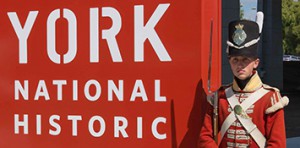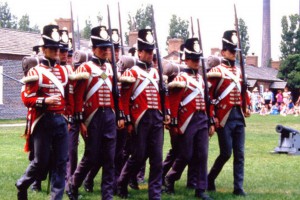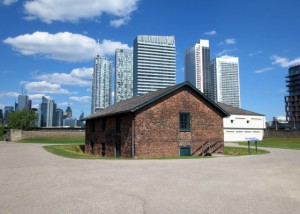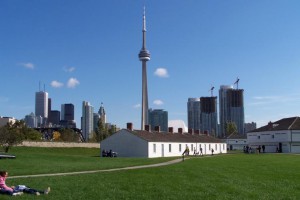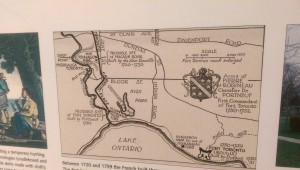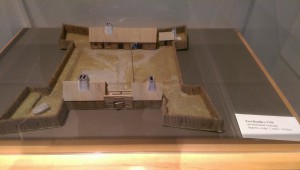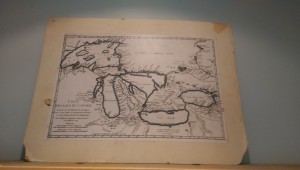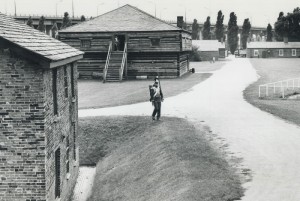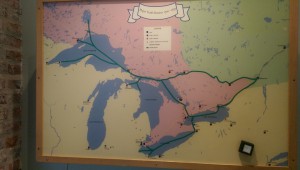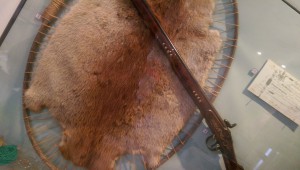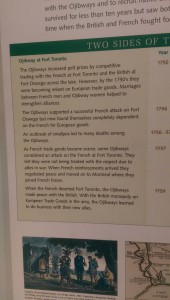There are several places in Toronto where I like to return.
One of them is Fort York, my center of gravity.
There are original War of 1812 buildings and 1813 battle site.Located in downtown.
Having got there once on the Open Day Toronto in May, every year I return there with pleasure.
History of Fort York starts from the moment when John Graves Simcoe ordered the construction of a garrison on the present site of Fort York in 1793.
Simcoe wanted to establish a naval base at Toronto in order to control Lake Ontario.
In his capacity as lieutenant-governor of the British province of Upper Canada, Simcoe also moved the provincial capital to Toronto from the vulnerable border town of Niagara during that tense period. Toronto was renamed ‘York,’ civilian settlement followed the government, and the settlement began to grow. During those early years, Fort York played a significant role in the economic and social development of the small backwoods community.
In 1807, Anglo-American relations began to deteriorate. In 1812, the United States declared war and invaded Canada. On 27 April 1813, the U.S. Army and Navy attacked York with 2700 men on fourteen ships and schooners, armed with eighty-five cannon. The defending force of 750 British, Canadians, Mississaugas, and Ojibways had twelve cannon.
The Americans stormed ashore west of the fort under the cover of their naval guns. The defenders put up a strong fight, but fell back to Fort York from the landing site in the face of overwhelming odds. The British commander, Major-General Sir Roger Sheaffe, then retreated eastward and blew up the fort’s gunpowder magazine (located near today’s Memorial Area). The explosion was devastating: 250 Americans fell dead or wounded from its blast, including their field commander, Brigadier-General Zebulon Pike. Total losses in the six-hour battle were 157 British and 320 Americans.
The Mississaugas and Ojibways withdrew into the forest, Sheaffe’s professional troops retreated to Kingston, and the local militia surrendered the town. The Americans occupied York for six days. They looted homes, took or destroyed supplies, and burned Government House and the Parliament Buildings (near today’s Front and Parliament streets). In 1814, the British retaliated when they captured Washington and burned the White House, Capitol, and other public buildings.
The Americans returned to a defenceless York in July 1813 to burn barracks and other buildings that they missed in April. Shortly afterwards, the British rebuilt Fort York on what is both today’s and Simcoe’s original site. In August 1814, Fort York was strong enough to repel the U.S. squadron when it again tried to enter Toronto Bay. In February 1815, word reached York that the War of 1812 had ended the previous December. It was good news: peace had returned, and the defence of Canada against American invasion had been successful.
The British continued to garrison Fort York after the war, although most soldiers moved to new barracks one kilometre west of the fort in 1841. (The officers’ barracks of that ‘New Fort’ or ‘Stanley Barracks’ survives today.) During times of peace, Fort York’s defences were allowed to deteriorate, only to be strengthened in periods of crisis, such as the Rebellion Crisis of 1837–41, or when war with the United States seemed imminent, such as in 1861–62.
In 1870, the Canadian government assumed responsibility for most of the country’s defences, including Fort York. Canadian troops maintained the harbour defences at the fort until its guns and earthworks became obsolete in the 1880s. The army, however, did not abandon the site at that time, but used it for training, barracks, offices, and storage until the 1930s. Some military activity even took place at Fort York during World War II.
Between 1932 and 1934, the City of Toronto restored Fort York to celebrate the centennial of the incorporation of the city in 1834. On Victoria Day 1934, Fort York opened as a historic site museum. Today, its defensive walls surround Canada’s largest collection of original War of 1812 buildings. Even the older part of the one reconstructed building on the site, the Blue Barracks, contains a significant amount of 1814-period material and is an interesting example of the efforts made during the Great Depression to create employment by restoring and rebuilding historic sites.
Today this place is one of the favorite places in Toronto.On annual festivals here gather from all Ontario and Canada.
Here lives the history of the city.
On the maps you can see the path of hunters, which passed through Toronto to America.
There are exhibits of weapons, household utensils, telling about the life and life of that period.

It is very interesting when the military march and demonstrate how to use weapons.
On holidays you can see dances that show different dance groups and collectives on the territory of the museum.
